Lecture 1 – Terminology and the Body Plan
1/25
There's no tags or description
Looks like no tags are added yet.
Name | Mastery | Learn | Test | Matching | Spaced |
|---|
No study sessions yet.
26 Terms
Anatomy
scientific discipline that investigates the body’s structure
Physiology
scientific investigation of the processes or functions of living thing
Structural & Functional Organizations (6)
Chemical Level: interaction of atoms
Cell Level: structural and functional unit of living organisms
Tissue Level: group of similar cells and the materials surrounding them
Organ Level: two or more tissues functioning together
Organ System Level: group of organs functioning together
Organism Level: any living thing
Anatomical Position
Body erect, face forward, feet together, palms face forward
Supine and Prone
Supine: lying face upward
Prone: lying face downward
Superior vs. Inferior
Superior (Cephalic) & Inferior (Caudal)
toward or away from the head
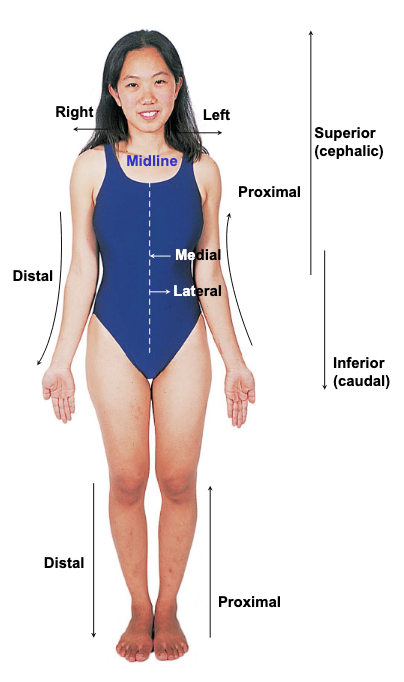
Medial vs. Lateral
relative to midline
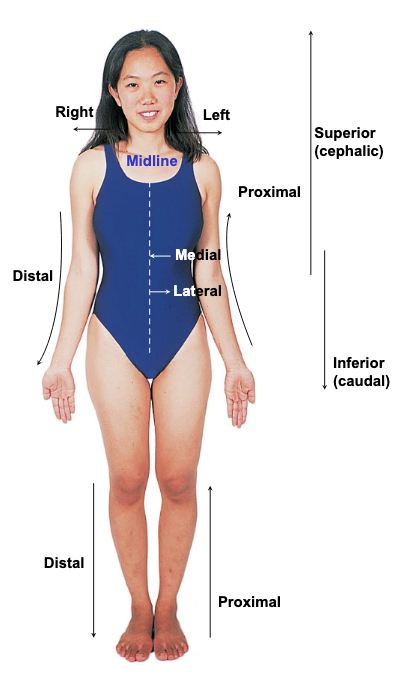
Proximal vs. Distal
for limbs
used to describe linear structures
Superficial vs. Deep
relative to the surface of the body
Anterior vs. Posterior
Anterior: Ventral
Posterior: Dorsal
forward and back
Body Planes
Sagittal – vertically through the body separates right and left
Frontal or Coronal divides body into anterior and posterior sections
Transverse / Cross divides body into superior and inferior sections
Oblique: Other than at a right angle
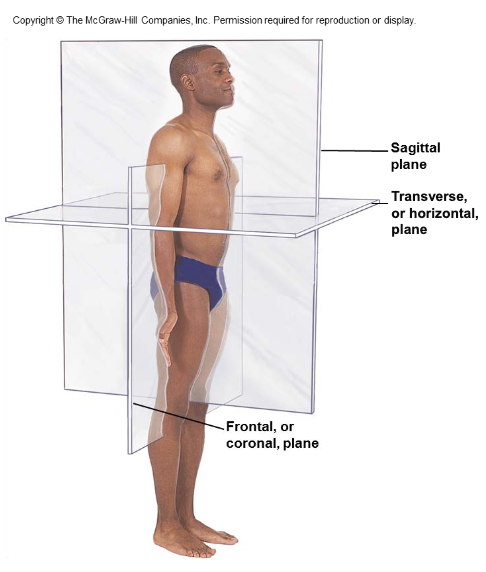
Planes Through an Organ
we use bcs not all organs are at 90 angles inside the body
Longitudinal: cut along the length of an organ
Cross/Transverse: cut at right angle to length of the organ
Oblique: cut at any but a right angle
Body Cavaties
2 types: Dorsal and Ventral
house internal organ systems providing protection
dorsal body cavity
Houses CNS (brain + spinal cord)
Subdivisions: 1) Cranial 2) Vertebral canal
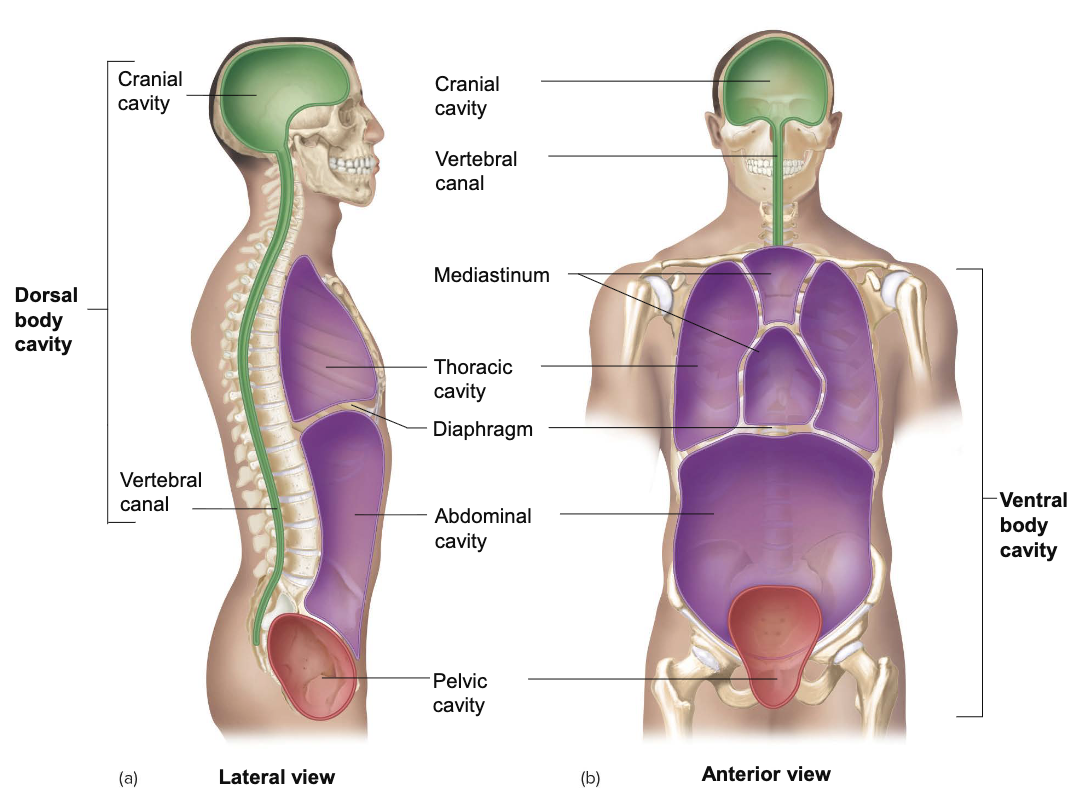
ventral body cavity
3 subdivisions of cavities:
Thoracic
Abdominal
Pelvic
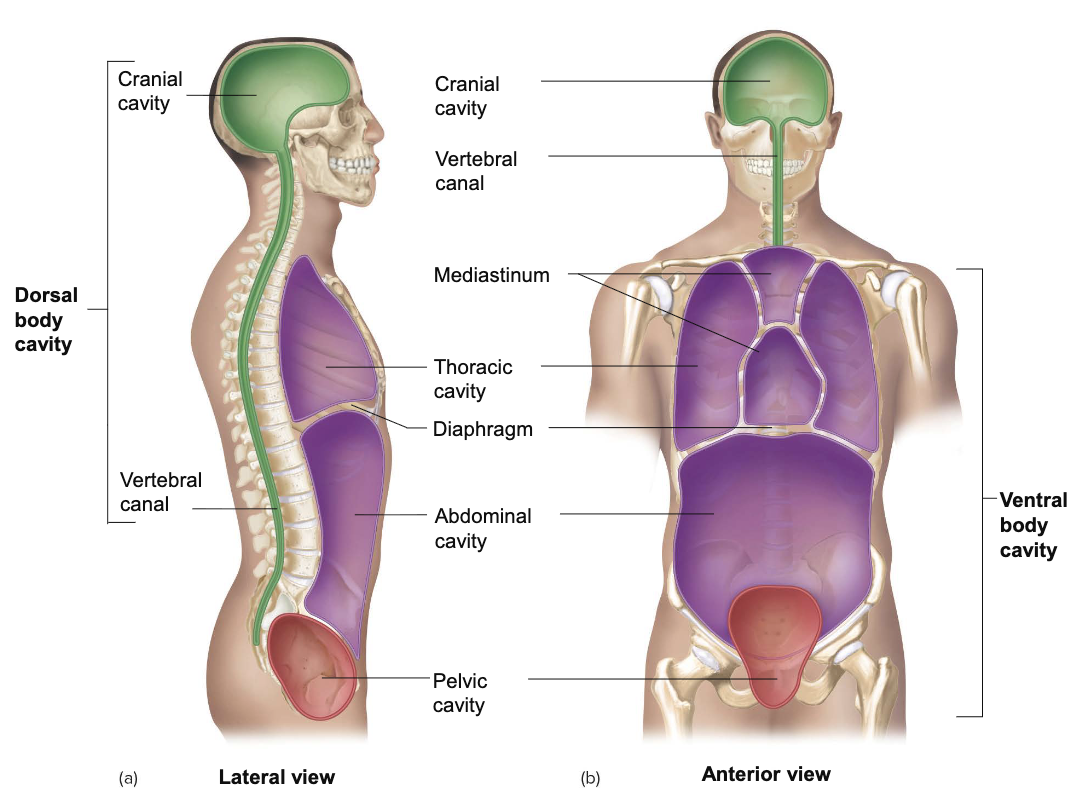
Thoracic Cavity
ventral body cavity
contains lungs & heart
subdivisions
1) lateral pleural cavities: each contains a lung
2) mediastinum: all structures of the thoracic cavity except the lungs
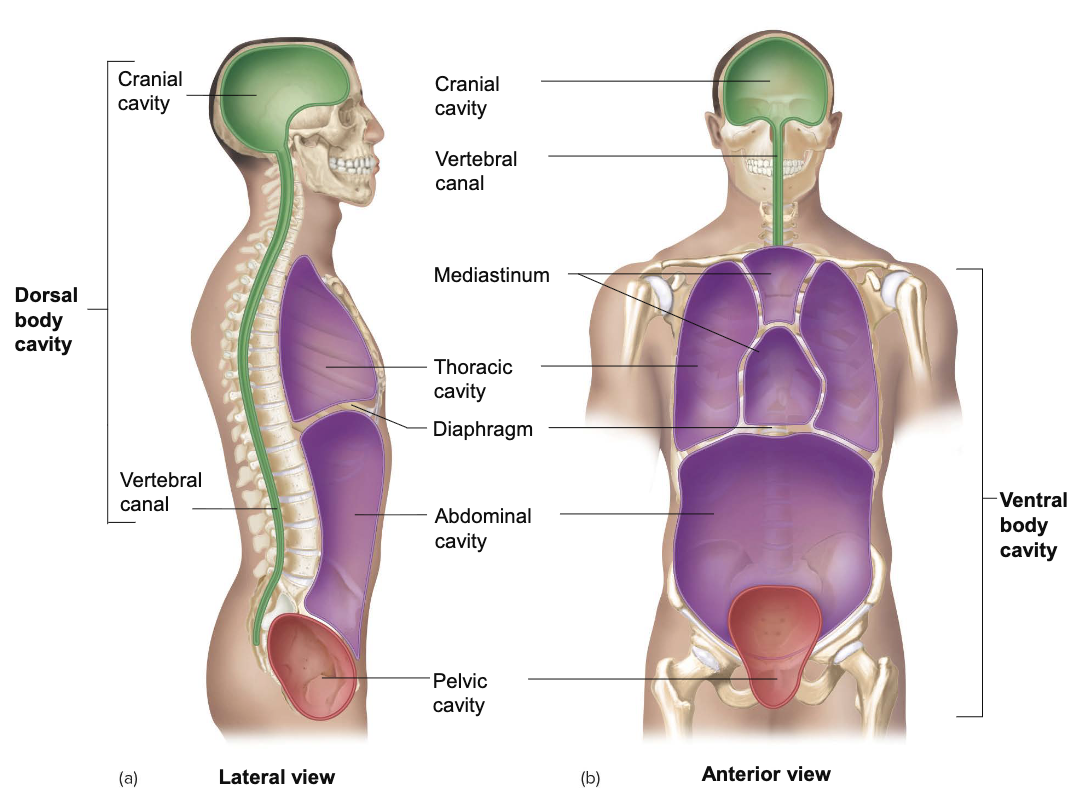
Diaphragm
divides body cavity into thoracic and abdominopelvic cavities
Abdominal Cavity
within ventral body cavity
contains the stomach, intestines, liver, spleen, pancreas, kidneys
Pelvic Cavity
within ventral body cavity
contains urinary bladder, part of the large intestine, reproductive organs
not separated by abdominal, more so a region within the pelvic bones
Serous Membranes
thin layer of epithelial tissue that folds on itself to make double layer
Cover the organs of trunk cavities & lines the cavity
Balloon analogy - Fist represents an organ
Cavity between two membranes filled with lubricating serous fluid that is produced by the membranes
Visceral & parietal serous membranes
Inner: visceral
Outer: parietal
Pericardium
serous membrane around the heart
pleura
serous membrane around the lungs
Peritoneum
serous membrane around the abdominal cavity
Peritoneal folds
serous membrane will create a flap or a double membrane that connects one organ to another in the abdominal cavity since there are many different organs (unlike heart or lungs)
some called mesenteries
gives pathway for nerves and blood vessels instead of them piercing through the membrane
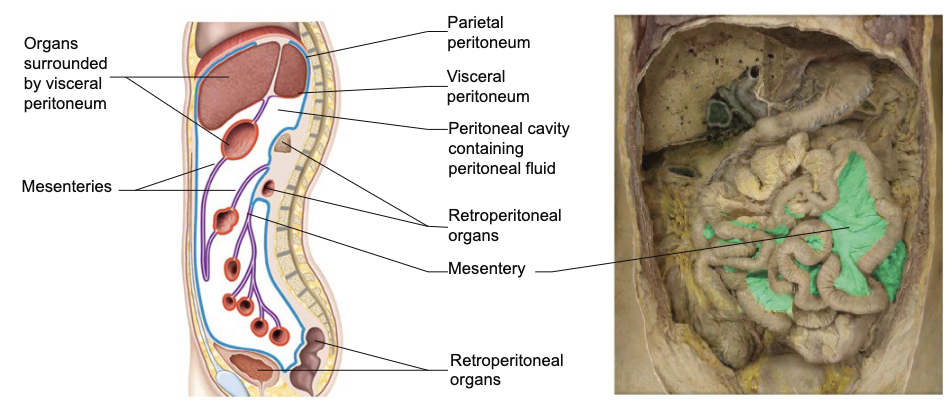
retroperitoneal organs
organs that sit outside or behind the serous membranes
found in the abdominal cavity as well as the pelvic cavity
pancreas, kidneys, bladder
no visceral membrane, only come in contact with a small portion of the parietal peritoneum